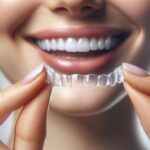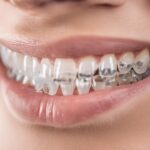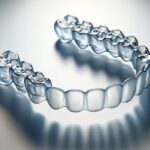Bad bites can cause some serious problems and the potability of bite correction with veneers is often questioned. From jaw pain to speech impediments to sleep apnea, these severe cases require expert dental professionals who can evaluate your condition and propose the appropriate bite correction treatment. The good news is that not all bite correction problems require major problems or constraints on your time or wallet. For instance, minor adjustments can make the difference between a comfortable bite that allows equal amount of pressure across all tooth surfaces or an awkward fit which causes discomfort when chewing and biting. Sometimes all that’s needed for bite correction is a conservative treatment like reshaping, polishing, bonding or veneer placement in strategic areas.
Veneers can fix teeth that are misaligned, or oddly-shaped, and can also correct an uneven bite. It can also improve the overall functioning of the teeth, jaw and bite. Most veneers are made from porcelain or a resin composite material. Most people choose porcelain since it simulates the properties and characteristic of teeth naturally, and resists staining. However, composite veneers require less removal of the tooth surface for adherence. As always, it’s best to fully discuss your options with your dentist before making a decision.
The Dental Veneer Procedure
First your dentist performs an evaluation which includes a dental exam, and talks with you about what you hope to gain by using veneers for bite correction. Your dentist may also have you bite down on colored paper to examine exactly where your teeth are touching to understand exactly where improvement is likely for better bite comfort. In some cases, a dentist may make molds or take x-rays.
Once you’ve consulted with your dentist about the various veneer options, your teeth will need to be prepared. Your dentist will remove about ½ millimeter of enamel from the tooth’s surface, and you may need to have a discussion about using a local anesthetic during this step. Once the enamel is removed the dentist makes a mold of your teeth which is sent to a laboratory for the construction of the new veneers. Usually this process takes 1 to 2 weeks.
Before the veneers are permanently cemented to the surface of your tooth or teeth, the dentist will temporarily place it on the tooth to examine it for color and fit, and make any adjustments to the thin veneer if needed. The color is adjusted by using a specific shade of cement. Next your dentist prepares your tooth for the cement by polishing, cleaning and finally etching the tooth or teeth to slightly roughen the surface for better attachment. Then applying the cement to the veneer, it is placed into position. A special light beam is applied to the area which activates the materials in the cement so that it will harden quickly.
Finally, the dentist removes excess cement from the area, examines your bite thoroughly, and makes the final adjustments. A follow-up appointment is made within a couple of weeks to verify how the teeth and gums are reacting to the new thin veneers, and how your new bite is working for you.
Is Bite Correction with Veneers a Good Option for Everyone?
Not everyone is the perfect candidate for veneers. Generally, veneers are a poor selection for people with unhealthy gums, tooth decay, large cavities or for those people who have weakened enamel. People who suffer from bruxism or who grind and clench their teeth are not good candidates either. Bruxism can cause the veneers to crack or fracture under such stress.
Other Information you need to know about Veneers
With veneers, you’ll get an attractive and natural appearance plus the added benefit of a bite that fits naturally when closing your mouth and comfortably when chewing. But unlike the color of your natural teeth that can be changed when you choose, once veneers are in place you cannot change its color. If you’re thinking of whitening your teeth, it’s best to have the procedure before receiving veneers. It’s also important to remember, that veneers do not exclude you from oral hygiene. Remember beneath those veneers are your natural teeth which require daily brushing and flossing. Biting your nails, using your teeth as a bottle opener, chewing pencils or other objects can also wreak havoc on those pretty new porcelains – so using teeth for their intended purpose is critical. Veneers are not repairable once their chipped or fractured. Veneers last anywhere from 5 to 10 years and can be an affordable choice when it comes to bite correction. Check with your dentist to see if you’re a candidate. It’s never too late to look and feel your best.









